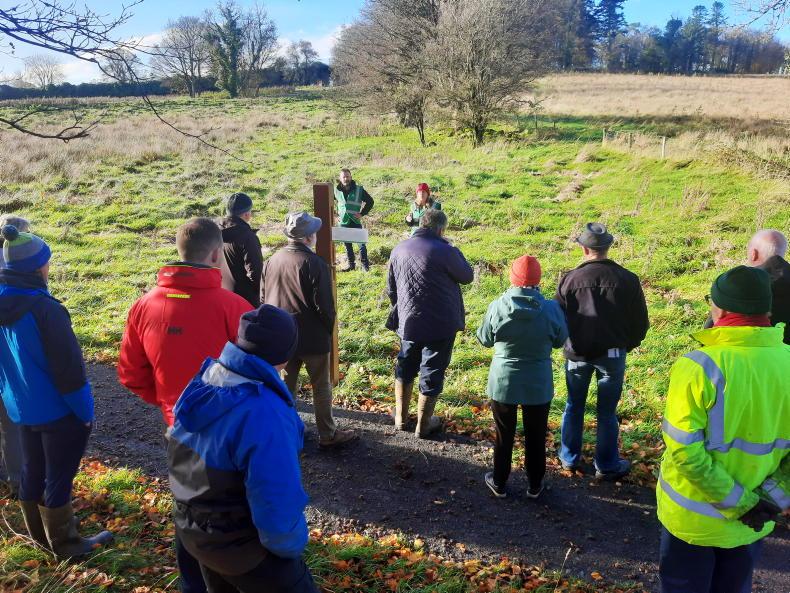Land – as the saying goes, we are not making any more of it, and in Ireland less and less of it is available for farming.
Inevitably, this is part of the push up in land prices for leasing, renting, and selling of land.
Under current policies, more and more land will go for rewetting. More and more will go to meet the proposed regulation that sets a legally binding target for ecosystem restoration of at least 20% of EU land and sea by 2030. This includes wetland, grassland and other habitats, rivers, lakes and riparian habitats, forests, heath and scrub, rocky and dune habitats. The nature restoration law requires member states to improve both the quality and quantity of these habitats.
We also have schemes pushing for extensive production such as organics, which means stocking farms at less than two cows per hectare. This could be much less depending on what capacity your land has to grow feed.
Currently, nitrates is a driver as farmers again look in many cases for paper acres to dilute organic nitrogen over a greater area, even if they don’t necessarily need the land for producing feed.
A forestry drive is on with big money behind it, and again no longer is this aimed at the top of a stony hill or for planting in the wet corner of the farm. Calling these changes out is not in any way to denigrate the various schemes. It is more to highlight for our predominant livestock farmers some of the reasons why certain changes are afoot in the land market.
Market power at the ringside
The marts had a bumper year as Darren Carty reports.
Farmers benefited from higher prices, especially for heavy cattle. Heavy cattle up €100 per head for 2022 shows the positive shift, on top of the €150 per head upward shift from 2020 to 2021.
Cattle throughput was up at marts as farmers cottoned on to the better mart prices.
It shows how the open market works, allowing farmers move between outlets for finished cattle. However, it also shows how factories can use the marts rather than lift quoted base price if they have visibility of supply and demand from both sides.
I was with a group of Cavan farmers just before Christmas and many of them were exporting slurry to stay out of or under derogation.
The concern for these farmers was that with all the land use changes that are happening, potential spread lands for their organic nutrients will get tighter and tighter, and much more costly, because of longer distances to transport.
Their concern is well placed. While not arguing with the principle of nutrient use tools such as soil sampling and nutrient management, what frustrates farmers is how annual weather and water data is going to influence how farms operate and the system they operate.
There is a need for much more discussion and understanding on all sides.
Land – as the saying goes, we are not making any more of it, and in Ireland less and less of it is available for farming.
Inevitably, this is part of the push up in land prices for leasing, renting, and selling of land.
Under current policies, more and more land will go for rewetting. More and more will go to meet the proposed regulation that sets a legally binding target for ecosystem restoration of at least 20% of EU land and sea by 2030. This includes wetland, grassland and other habitats, rivers, lakes and riparian habitats, forests, heath and scrub, rocky and dune habitats. The nature restoration law requires member states to improve both the quality and quantity of these habitats.
We also have schemes pushing for extensive production such as organics, which means stocking farms at less than two cows per hectare. This could be much less depending on what capacity your land has to grow feed.
Currently, nitrates is a driver as farmers again look in many cases for paper acres to dilute organic nitrogen over a greater area, even if they don’t necessarily need the land for producing feed.
A forestry drive is on with big money behind it, and again no longer is this aimed at the top of a stony hill or for planting in the wet corner of the farm. Calling these changes out is not in any way to denigrate the various schemes. It is more to highlight for our predominant livestock farmers some of the reasons why certain changes are afoot in the land market.
Market power at the ringside
The marts had a bumper year as Darren Carty reports.
Farmers benefited from higher prices, especially for heavy cattle. Heavy cattle up €100 per head for 2022 shows the positive shift, on top of the €150 per head upward shift from 2020 to 2021.
Cattle throughput was up at marts as farmers cottoned on to the better mart prices.
It shows how the open market works, allowing farmers move between outlets for finished cattle. However, it also shows how factories can use the marts rather than lift quoted base price if they have visibility of supply and demand from both sides.
I was with a group of Cavan farmers just before Christmas and many of them were exporting slurry to stay out of or under derogation.
The concern for these farmers was that with all the land use changes that are happening, potential spread lands for their organic nutrients will get tighter and tighter, and much more costly, because of longer distances to transport.
Their concern is well placed. While not arguing with the principle of nutrient use tools such as soil sampling and nutrient management, what frustrates farmers is how annual weather and water data is going to influence how farms operate and the system they operate.
There is a need for much more discussion and understanding on all sides.






 This is a subscriber-only article
This is a subscriber-only article










SHARING OPTIONS: